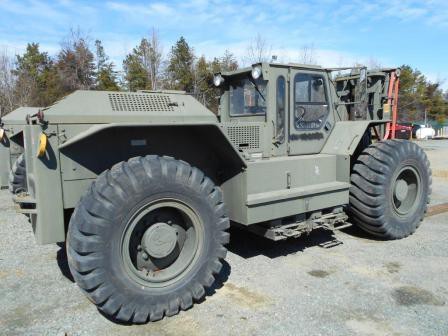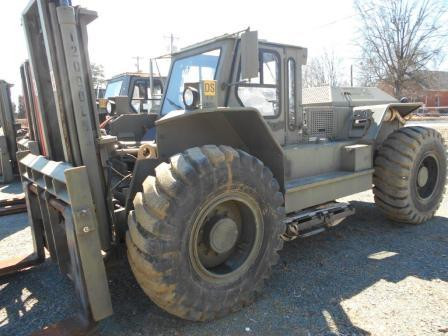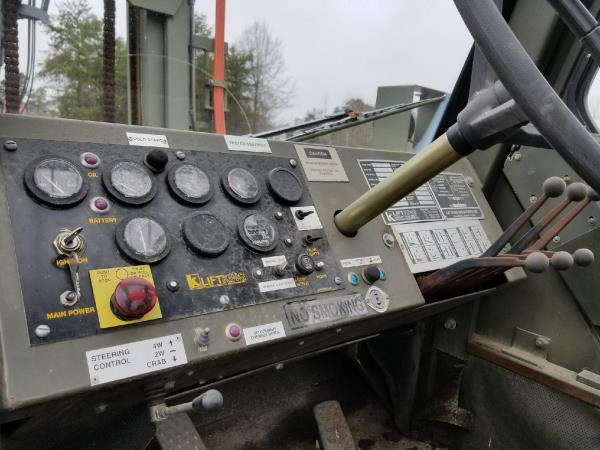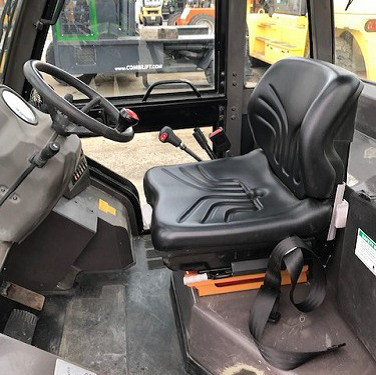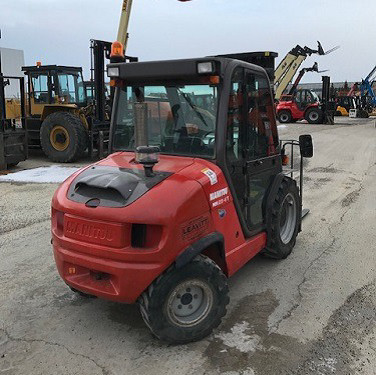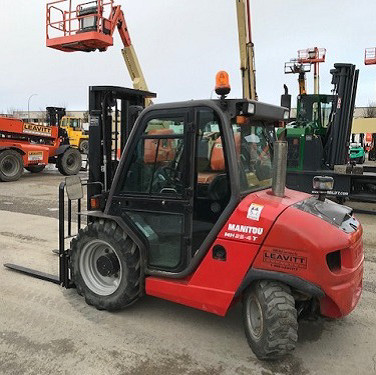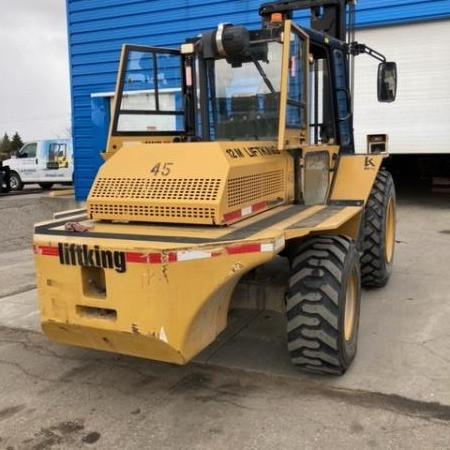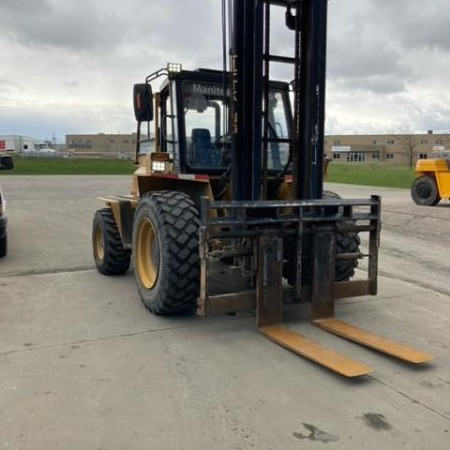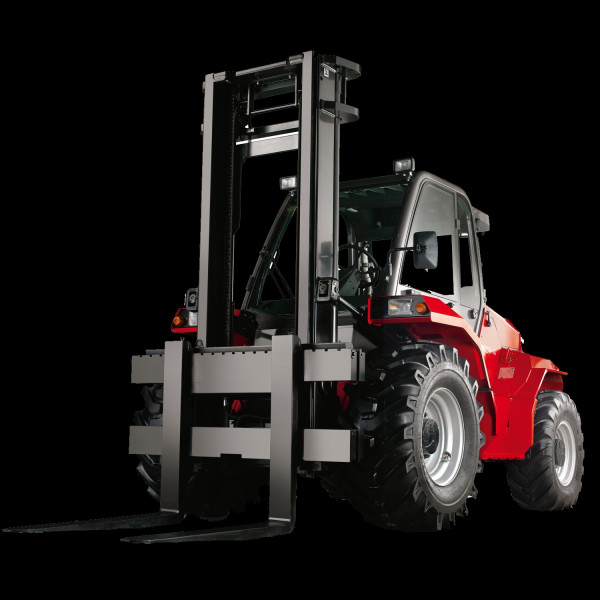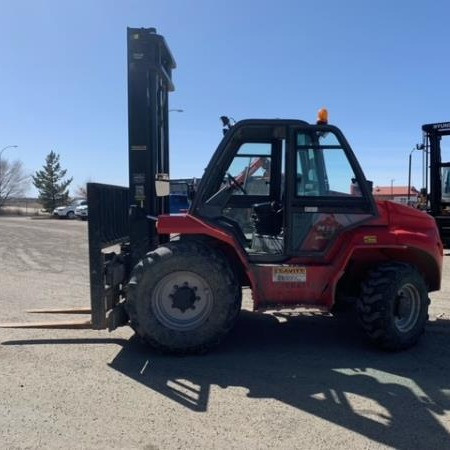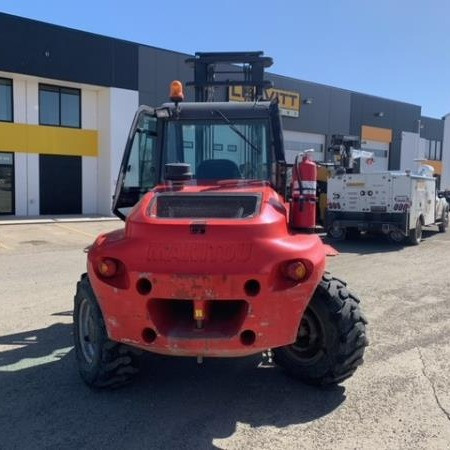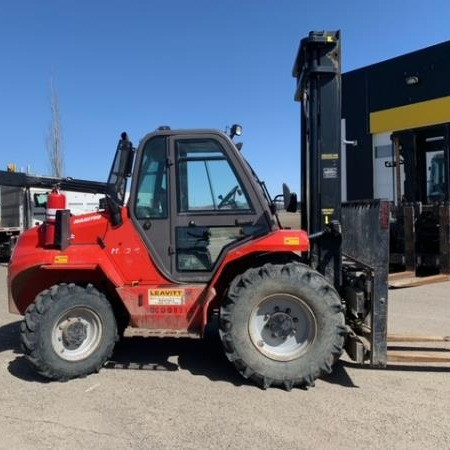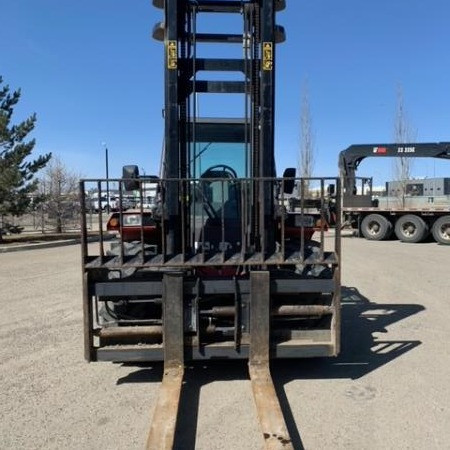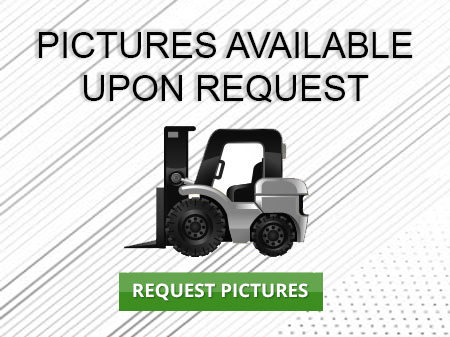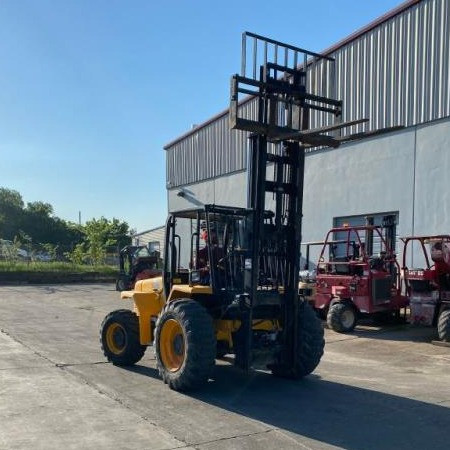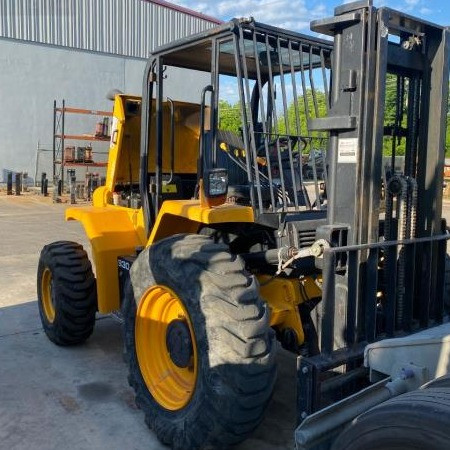Rough Terrain Forklift Scottsdale
Used Rough Terrain Forklift Scottsdale - Forklifts rely on two forks to unload, load and transport items. The rough terrain forklift and the industrial forklift are the two main types of forklift trucks.
The first category of forklifts, industrial forklifts, are mostly used in warehouses and at loading docks on surfaces that are relatively smooth and level. By contrast, the second category of forklifts, rough terrain forklifts, are commonly used to run on uneven and rocky surfaces. Rough terrain forklifts are often seen at construction sites and outdoors. They have the weight capacity, size and tires to handle heavy loads. The main difference between rough terrain and industrial forklifts is the cushion tires that are on industrial forklift models. Rough terrain models rely on pneumatic tires, a kind of tractor tire known for better floatation and traction abilities. Internal combustion engines can power industrial forklifts; however, more often they rely on an electrical source such as a fuel cell or better. Rough terrain models typically rely on an internal combustion engine.
Types of Class 7 Rough Terrain Forklift Trucks
There are three main types of Class 7 Rough Terrain Forklift Trucks:
1. Straight mast forklifts;
2. Telehandler forklifts; and
3. Rotating telehandler forklifts.
Regardless of its type, all rough terrain forklift trucks are designed to handle, as their name suggests, natural rough terrain and disturbed rough terrain typical of construction and military sites. A rough terrain forklift also offers increased maneuverability and performance. Safety considerations are taken into account for rough terrain locations with raising loads in difficult environments to keep the operator safe from tipping over. The machine needs to remain in a stable position prior to lowering, lifting or moving any items. Rough terrain forklift operators must practice correct lifting techniques to remain stable on the ground.
Straight Mast Forklifts
The straight mast forklift design enables easy transport around rough terrain locations including construction and demolition sites. These forklift trucks provide increased maneuverability and accessibility because it is fitted with big, heavy-duty pneumatic cushion tires. These allow the forklift truck to easily travel over rough terrain on the worksite. Most straight mast forklift units have 2WD or 4WD configurations. Most straight mast forklifts are powered by diesel or propane fuel, allowing them to be used indoors for short periods but are more suited to outdoor applications. Straight mast forklifts have a similar lift capacity compared to standard forklift models; ranging from 5K to 36K lbs.
Telehandler or Telescopic Handler Forklifts
Telehandler or telescopic handler forklift trucks are equipped with a telescoping boom, giving them their name. This telescoping boom allows the forklift truck to pick up and place loads at various distances and lift heights in front of the machine. The operator can achieve enhanced flexibility with better reach during load placement.
A standard telehandler forklift is long and low, with two wheels at the very front of the forklift and another pair of wheels toward the rear of the machine. Mounted at the back of the forklift, the telescopic boom is on a pivot that is located many feet above the forklift frame. The fuel tank and hydraulic fluid tank are found opposite to the forklifts’ cab that is typically mounted on the left side. The forklift engine and transmission are situated along the center of the machine. This common configuration allows for a balanced forklift which is necessary for the basic stability of the machine which lifting, transporting and lowering loads.
Telehandler forklifts provide much greater lift heights when compared to a standard forklift. Also called compact telehandlers or high-reach telehandlers, these forklift trucks can lift their full load capacities from 18 feet, for the compact telehandlers, to 56 feet, for the high-reach telehandlers, into the air. Their load capacities usually range between 5,500 and 12,000 pounds.
All-wheel steering is popular for all-terrain forklifts and provides increased maneuverability. Thanks to steering features including power-shift transmission, the operator can maneuver the machine in excellent proximity to the work location.
More recently, Telehandler forklift models have included additional features that incorporate the latest in ergonomics. These features include tilted steering options and roomier cabs to increase operator comfort. Increasingly, these types of ergonomic features are in demand at worksites as they have been shown to improve productivity by decreasing operator repetitive stress injuries and operator fatigue.
The majority of telehandler forklifts are operated by a single joystick. The joystick controls all the forklift’s boom functions as well as the hydraulic system which allows for straightforward and efficient operation.
Telehandler forklifts can also be equipped with non-marking tires which allow them to be used in other applications such as the installation of signs and billboards as well as maintenance on buildings and stadiums.
Rotating Telehandler or Roto Telescopic Handler Forklifts
The basic telehandler forklift has much in common with rotating telehandlers and roto telescopic handler forklifts. The rotating telehandler can lift excessive loads to extreme heights safely and efficiently. The turntable or rotating ability add extra panache. Rotating the forklift a complete three-hundred-and-sixty degrees creates a larger working location without the need of repositioning the forklift.
Because of this additional feature, rotating telehandlers often have a second joystick to allow operation of the rotation function apart from the lift function. Power-assist steering minimized slip differential on the rear axle for additional traction and four-wheel drive are some of the extra features offered on rotating telehandlers and standard telehandler models.
Of course, a machine that can rotate has extra safety considerations to understand. Because of this, rotating telehandler rough terrain forklifts come with stabilizers to increase the safety when rotating loads from one side of the forklift to the other. Certain rotating telehandlers operate without stabilizers; minimizing the time it takes to reposition the machine and move to other workplace locations.
Rotator telehandlers are usually smaller than their fixed cab counterparts, the standard telehandler. Understandably, rotator telehandler machines can handler smaller load capacities compared to their standard telehandler counterparts. Rotating telehandlers offer load capacities ranging from 4000 to 10,000 lbs. and lift heights between fifteen to eighty feet.
Both telehandlers and rotator telehandlers can be used as a crane when fitted with a winch attachment. These units can enable job sites that require a crane to get the job done without having to rent and transport a separate machine.
Advancements for Rough Terrain Forklifts
Many attachments are currently available for rough terrain forklifts, such as booms, winches, rotating fork carriages and articulating booms. Forklift attachments are vital for diversifying the machine. They will continue to be developed for years to come.
Most of the proposed advancements will consist of included safety features within the rough terrain forklifts. Automatic load restriction units and certain safety features have started being implemented. This system weighs a load automatically and then calculates the safe reach distance of the load while considering the extension and boom angle. An alarm sounds once the safe distance is reached, warning the operator to make load weight, reach distance or boom angle adjustments.
Rough Terrain Forklift PDF
Stock Number: 267846 GL
Make: Liftking
Model: LK12000
Year: 2003
| Stock Number |
267846 GL |
| Make |
Liftking |
| Model |
LK12000 |
| Year |
2003 |
| Category |
Rough Terrain Forklift |
Stock Number: DP-MAN008 GL
Make: MANITOU
Model: MH25-4T
Year: 2016
| Stock Number |
DP-MAN008 GL |
| Make |
MANITOU |
| Model |
MH25-4T |
| Year |
2016 |
| Category |
Rough Terrain Forklift |
Stock Number: 209058 GL
Make: LIFTKING
Model: LK12M42
Year: 2015
| Stock Number |
209058 GL |
| Make |
LIFTKING |
| Model |
LK12M42 |
| Year |
2015 |
| Category |
Rough Terrain Forklift |
Stock Number: EQC008213 GL
Make: MANITOU
Model: M50
Year: 2017
| Stock Number |
EQC008213 GL |
| Make |
MANITOU |
| Model |
M50 |
| Year |
2017 |
| Category |
Rough Terrain Forklift |
Stock Number: 208325 GL
Make: MANITOU
Model: M50.4
Year: 2015
| Stock Number |
208325 GL |
| Make |
MANITOU |
| Model |
M50.4 |
| Year |
2015 |
| Category |
Rough Terrain Forklift |
Stock Number: LS15257 GL
Make: JCB
Model: 930
Year: 2013
| Stock Number |
LS15257 GL |
| Make |
JCB |
| Model |
930 |
| Year |
2013 |
| Category |
Rough Terrain Forklift |




